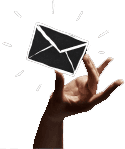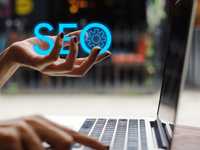How to Create an SEO Optimized Blog Post [Using 8 On-Page SEO Techniques]

For online businesses, creating an SEO-optimized blog post and achieving the top spot on Google Search is the ultimate goal. Why? It significantly increases organic traffic, visibility, and the potential for sales. This article will guide you on how to craft a successful SEO-optimized blog post to improve sales conversions and generate more interest in your business.
Writing An SEO-Optimized Blog Post

Writing a valuable SEO optimized blog post that drives traffic and generates leads can sometimes be easier said than done. Sure, simply writing articles of 300-500 words is nice. But guess what? It’s probably not going to impact any search query need.
You need to follow a pattern, a systematic approach that you can implement regularly to build your brand authority through blog articles. In this blog, we will discuss 8 steps that will guide you through the process of creating a well-executed SEO-optimized blog post:
Step 1: Do keyword research
Step 2: Identify a niche
Step 3: Analyze the competition
Step 4: Write a great title
Step 5: Write a great opening paragraph
Step 6: Show your readers realistic data and results
Step 7: Use optimized subheadings
Step 8: Do on-page SEO
Step 1: Keyword Research

Keyword research is the process of finding words, phrases, and terms that people write in a search engine. It is the first and most crucial step in SEO. It helps you understand what people are looking for and how many are interested in certain topics.
This research lets you create blog posts that match what your audience wants, making your content more relevant and engaging. By finding keywords that are popular yet have less competition and higher potential earnings per click, you can draw more visitors to your website.
You can do keyword research manually or using free online tools.
I. Manual Methods for Keyword Research
There are a number of manual methods to find keywords (keyword research).
- Google Search engine for keyword research – When you write a phrase or term in the Google search engine, it will provide you with suggestions. This list of suggested keywords is essential for creating a strong keyword list because Google is indicating that people are actively searching for these specific terms.
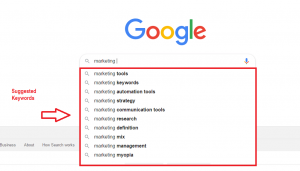
2. Google search related terms for keyword research – When you search a term or phrase in the Google search engine, you will find search-related terms at the bottom of the page. These terms are suggested by Google, so make a list of these terms as well.

3. YouTube for keyword research – Open YouTube and write a term in the search bar. It will give you suggested keywords by YouTube that you can list down.
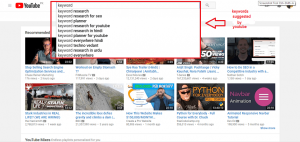
4. Reddit for keyword research
You can discover plenty of keywords from Reddit because part of your audience may use the platform. To do this, search the name of your industry in the Reddit search bar, find a post that has lots of comments and upvote,s and compile a list of the phrases and terms used.

5. Forums for keyword research – To find keywords from forums your target audience may hang out on, write terms like these on Google with keywords.
“keyword” + “forum”
“keyword forum”
“keyword” + “board”
Visit these ranked forums and select the most viral topics.
II. Free Tools to do Keyword Research
If you do not want to find keywords manually, there are plenty of free tools to find keywords. With these tools you can:
- Find keywords
- Check keyword volumes
- Find low difficulty keywords
- Find CPC (cost per click) for keywords
Here are 3 free keyword research tools that you can easily use:
- Google Keyword Planner
Google Keyword Planner is a great tool for finding a keyword because it provides data directly from Google. Google always provides reliable and accurate insights, making it a dependable tool for SEO experts.
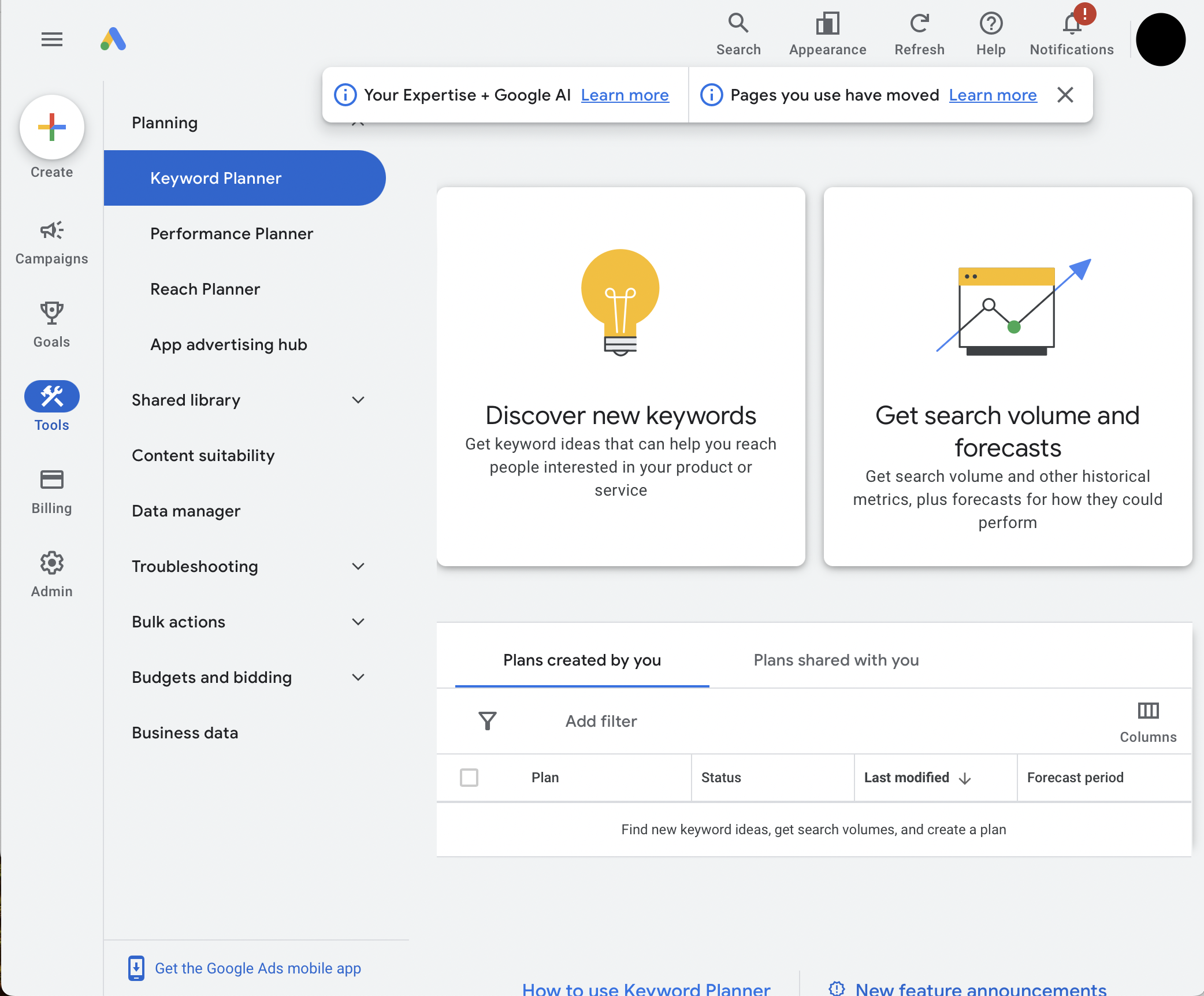
2. Keywords Everywhere
Keywords Everywhere is a favorite keyword research tool used by many SEO experts. Install the Keywords Everywhere extension in your Chrome browser and it will automatically give you a suggestion whenever you write in a search engine.
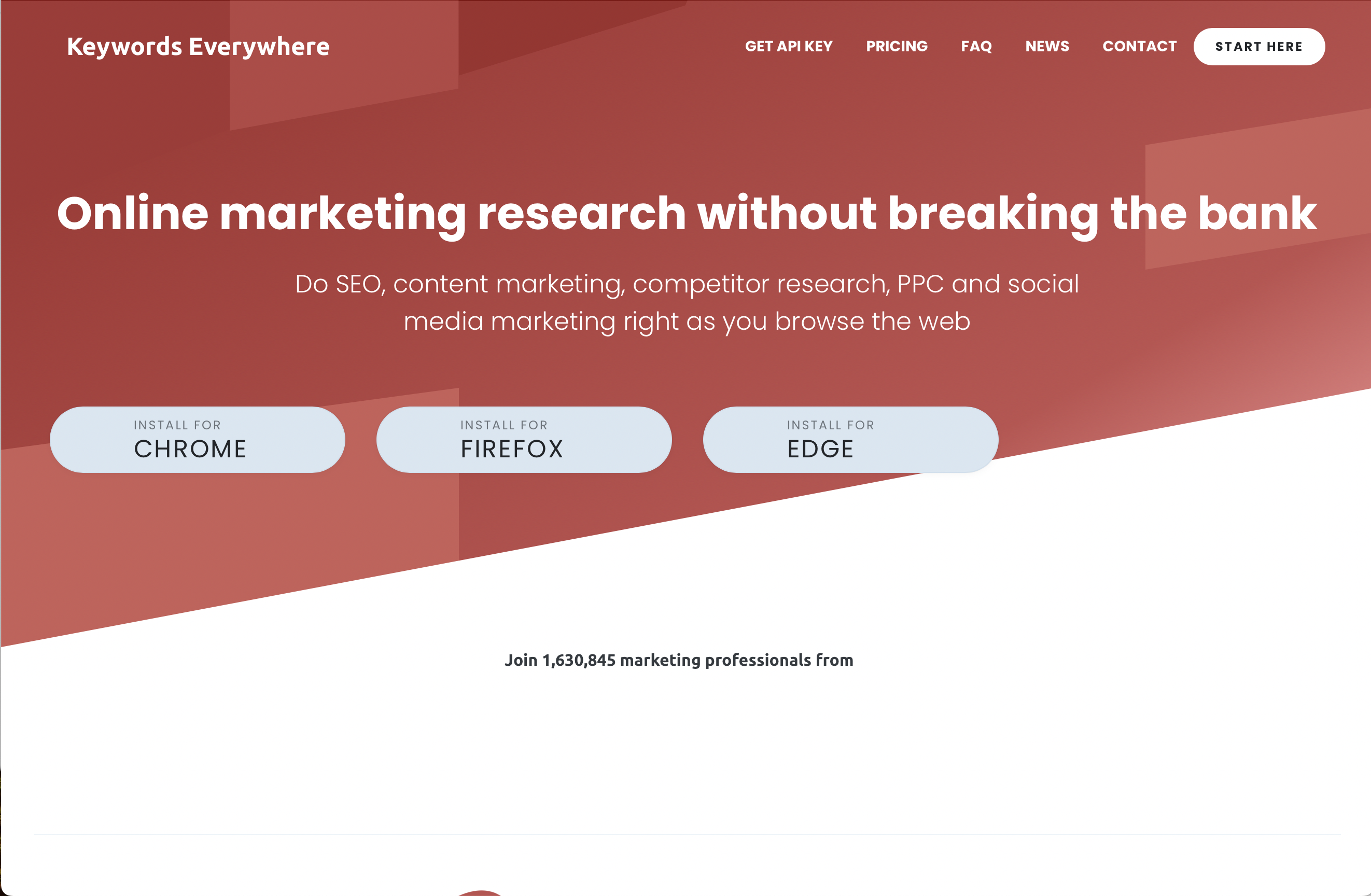
3. Ubersuggest
Ubersuggest is a wonderful tool for finding various keywords. After you write your desired keyword, this tool will suggest plenty of other keywords for your blog post.

By using these tools and methods, you should now be able to easily find out what your audience is searching for and what they want to know. The next step, which is particularly effective for smaller or newer blogs, is to identify a niche for your blog post.
Step 2: Identify A Niche

If you are just starting your online campaign, it’s extremely difficult to compete with large organizations that have seemingly unlimited content and a vast marketing budget. They’ve been at this for a long time. You’ll end up wasting your time and money trying to outrank them.
The key to outranking is using specificity (going niche). Going niche means choosing more specific, micro topics.
Let’s say:
- There is a website called “plants online.” There are a million species of plants, and this website has been working on it for a long time.
- If you want to start a plants website, it’s going to be tedious to work on all types of plants.
- This will take years to assemble. You definitely won’t outrank your competition with this mess!
- Earning won’t be attainable because your competitive website has a large domain authority.
So, what should you do?
■ Go more specific, go micro (go niche). Choose one category and work on it.
■ Let’s say you are working on succulents.
■ It is easier to target specific, income-generating, high volume, and low-competition keywords to write SEO-optimized blog posts.
■ Your blog posts can outrank your competition even if they are the parent category (plants).
■ This is because you are more specific to that topic, you have more material, and your keyword “succulent” is in your domain (Google will reward you for that).
Once you have decided on the niche for your blog posts, you can conduct keyword research to find out what your audience wants to know about that niche topic. This will give you a list of ideas for blog posts that you can SEO optimize.
Now it’s time to take a look at your competitors’ blog posts that are already SEO optimized and ranking, to better understand what they are doing right, so you can do the same for your blog post.
Step 3: Analyze The Competition

Analyzing your ranked competitors is an essential part of producing an SEO-optimized blog post. After all, they have produced top-ranking blog posts. So once you have determined your niche, type in a keyword or phrase for a blog post idea you have and look at the top 10 sites that come up. Open all 10 websites in different tabs, and then start analyzing.
Here are some things you want to be looking for:
- The Word Count
Google generally ranks posts that are high-quality and heavy on words. Why? Because, one, with the input of more data into longer posts, they will make more sense than the shorter ones. Google recognizes this.
So, copy your competitor’s blog posts into Microsoft Word and see how many words there are. Follow this step for all ten websites and calculate the overall average. Your aim should then be to create a blog post that has more words than your competition.
2. The Images
Next thing you should do is check the images of your competition. Count how many images they are using and check what type of images they are using. Are they fancy, simple, etc?
Google rewards websites that use more images in their blog posts, and users prefer to see images that cover the topic in a blog post rather than just plain text.
So aim to insert a greater number of images in your blog post than your competitors. Just remember to keep the images relevant to the topic at hand. This will help boost your SEO.
If you are struggling to find topic-specific images. You have two main options.
- Create your images using Canva or edit the text in them by yourself.
- Purchase images from a stock images site like Shutterstock. If you are a beginner, you can use the free images available on these sites.
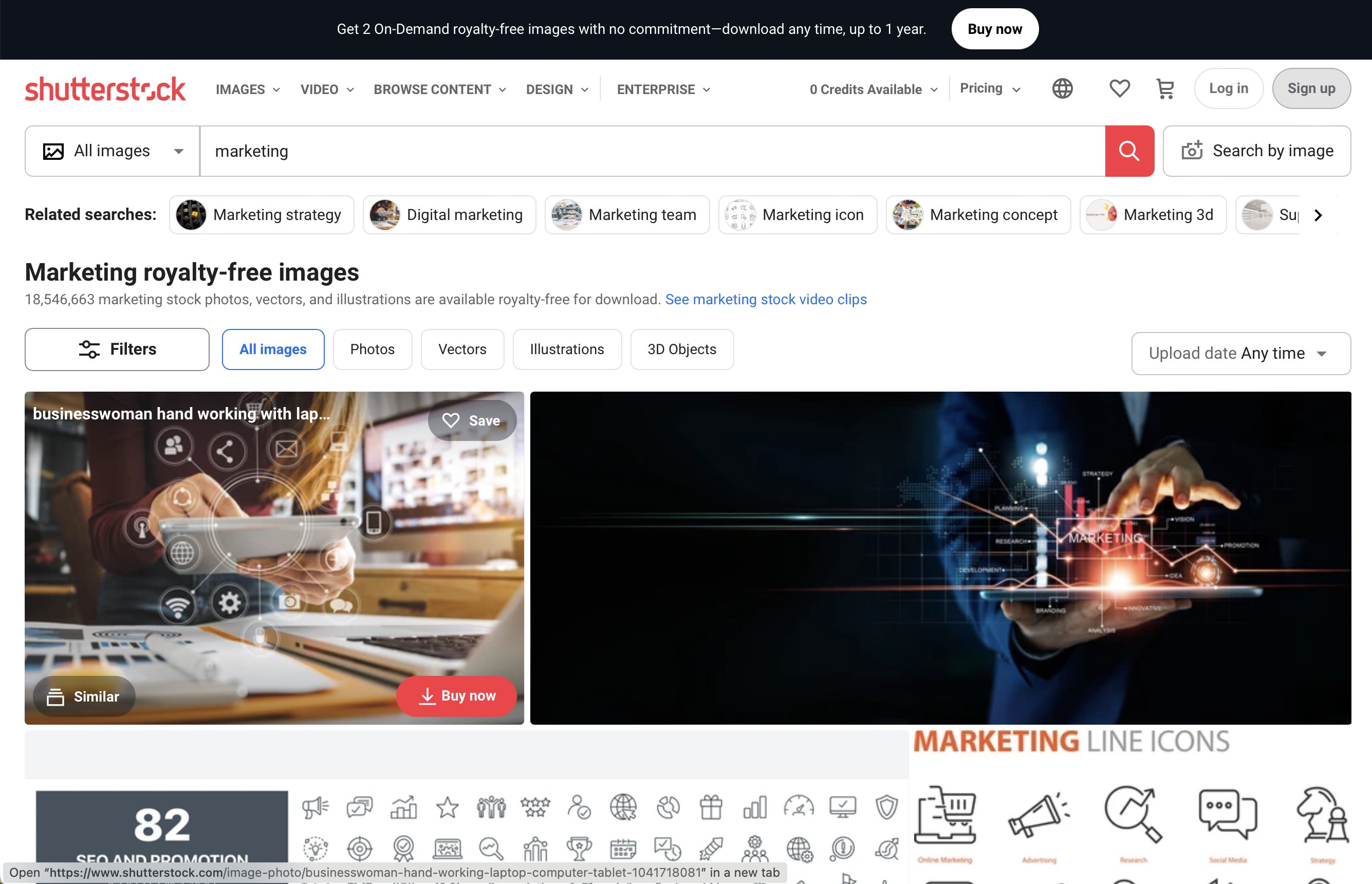
3. The Content
If you want your blog posts to be SEO optimized, you must spare some time and read your competitors’ blog posts.
While you’re reading, ask yourself these questions:
♦ Is the tone formal or informal?
♦ Is it a first-person or third-person narrative?
♦ Is their content humorous, interactive or serious?
♦ Are they writing their headings like Google suggests (what people are searching) or not?
♦ How much data did they gather (valuable)?
♦ Are they doing justice to the topic by providing realistic information?
♦ How many comments did they get on their blog post?
♦ Are they overusing affiliate links and ads in the middle of the post?
♦ Is their post messy or clean?
♦ What kinds of fonts are they using?
♦ Are they using schema markups?
♦ Is their blog article visually appealing?
♦ Do they use citations and references?
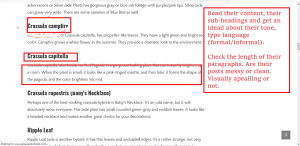
Answering these questions should give you a good idea about the type of content your competitors have.
4. The missing pieces:
There are a lot of other SEO ranking factors within a blog post. Check for missing pieces in a competitor’s blog posts like:
♦ Infographics
♦ Videos
♦ Graphs and tables
♦ Animations
If you don’t see these elements, then you have a strong chance of outranking your competition by adding them.
Not only will it make your blog post look visually appealing, informative, and authentic, but it will help your post rank in the top positions.
Step 4: Write A Great Title

The title is the head of a blog post, so nailing it is crucial. These two techniques will make your blog title more user-friendly, catchy, and effective.
- Use Numbers
According to a study by Conductor, headlines with numbers in them get more CTR (click-through rate) than headlines without a number.
Example:
The original title would be: “Cars under $10,000″
Title with a number would be: “Top 10 cars under $10,000″
2. Use Brackets
You can also use brackets in your title to make it even more enticing (people should want to click and check what’s lying inside).
HubSpot analyzed 3 million websites and found that headlines with brackets and parentheses boosted CTR (click-through rate) by an average of 38%.
Example:
The original title would be: “Top 10 cars under $10,000”
Title with a number would be: “Top 10 cars under $10,000 [including vintage cars]”
5. Write A Great Opening Paragraph

“The first impression is the last impression” Not only is this a catchy quotation, but it describes the significance of an introduction.
Your opening paragraph is your chance to capture the attention of readers Include these elements in your opening paragraph to optimize it:
■ Introduce readers to your blog post and tell them what they will get from your content.
■ Make an abstract (a statement that summarizes what your blog post is all about).
■ Show practical results by quoting an industry expert.
■ Make a comparison.
■ Ask a question that will open up the discussion.
■ Identify the point of the debate.
■ Explain the situation.
■ Describe the current problem.
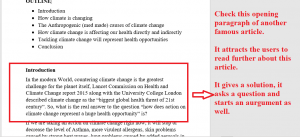
Keep in mind, people won’t stick around if you spill everything in the opening segment, so don’t spend much time on the introduction; make it precise and to the point. Google will measure the total time that each reader spends on your blog post and rank your post accordingly.
Step 6: Show Your Readers Realistic Data And Results

Due to lower attention spans, readers only read 20% of blog articles on average. Data-driven blog posts are not only attractive due to their authenticity, but they also interest readers to stay on the post longer. So give your audience realistic data and results; no shenanigans.
For example:
■ If your topic is “how to grow a jade plant”, then you must insert images and videos showing results of growth.
■ Show them the data before and after “caring;” how the plant looks after a certain period.
■ You will find those images and data on Google. You can also get them from a nearby nursery.
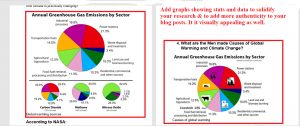
Step 7: Use Optimized Subheadings
SEO-optimized blog content needs to contain subheadings that match Google’s search query results. It will ultimately lead to more organic traffic to your blog.
To identify the best subheadings, search your topic and check the Google results. Those results in the search query will tell you what users need and what they are searching for. From there, prepare each subheading according to the search query. Google will ultimately read that portion of your blog post and rank it.

Keep in mind that a great subheading is nothing without useful context to back it up. The content for each subheading should speak directly to what the subheading is addressing and should do so in a precise and straightforward way. This will prevent your reader from losing their attention.
Use bullet points and bold characters to highlight your main points
Users find it easy to look at the highlighted or graphically distinctive portions of a blog. If you have anything important in your sub-topic, try to write those in bullets or a table.
Bullet points
Bullet points make the blog attractive and easy to follow. In your blog post, you should try to use bullet points at least 2-3 times.
Try to make your points as relevant as possible, and make sure you provide a logical transition into your bullet points.
For example, you can lead your reader to the bullets like this:
“here are the tips you are looking for”:
■ A
■ B
■ C
■ D
Bold characters
Bold characters and highlighting of a line are used by elite-level writers.Sometimes, a single line or a word carries the meaning of an entire paragraph like:
Example:
“If you want to SEO optimize your content, you should consider doing ON-PAGE SEO, which carries immense importance as far as rankings are concerned.”
Here, the words with essential importance to the entire paragraph are bolded out. Readers and critics will directly look at the bold characters first because they are visually appealing.
With all the steps we have laid out, you should be able to successfully research keywords, analyze your competition, and write a blog post.
Now let’s dive into the 2nd most important part of this article, that being the ON-PAGE SEO.
Step 8: Work on Your On-Page SEO
If creating a user-friendly blog post is one side of the coin, then on-page SEO is the other side.
This is immensely important in the online marketing field. To begin this process, paste all of the content into the WordPress editor.
If you don’t know how, here are the steps to accomplish that:
■ Open your dashboard like this: “www.youwebsite.com/wp-admin”
■ Enter your passwords and username.
■ Move your cursor to post and click “add new.”
■ There is your title on the title box & your body in the body box.

NOTE:
WordPress Editor may be different on some websites because there is a “Gutenberg” update available and a new version of SEO. We are teaching the conventional, more common version of the WordPress Editor.
Now we can do some ON-PAGE SEO optimization. There’s a total of 11 parts to this process. They are:
-
Installing Yost plugin
The Yost SEO plugin is a premium software used to optimize the content on WordPressEditor. The heart and soul of ON-PAGE SEO is Yost plugin. Without this, you can’t SEO optimize anything.
Yost plugin matches Google’s motives as closely as possible. It tells us how to optimize our content, how and where to use keywords, and how to set the readability of our posts to impress Google.
More than 90% of websites on Google are using Yost SEO plugin to optimize their content.
It is as close as any software to understanding the ranking algorithm of Google.
To install Yost SEO plugin:
■ Open the WordPress dashboard.
■ Move your cursor to the plugin.
■Either click on the install plugins that will lead you to the plugin market where you can purchase it or click on the add new if you already have one.
■ After clicking the add new, click on the upload plugin.
■ Select the ZIP file of Yost p
■ Now, click the installation and wait.
■ Finally, click “Activate”
CONGRATULATIONS, YOU GOT YOUR YOAST SEO PLUGIN!
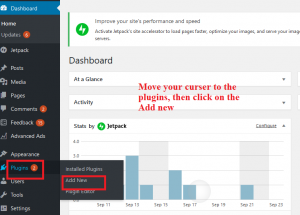
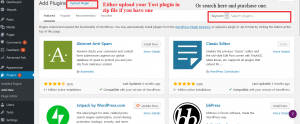
2. Titling the tag
The title is the first step for any reader to determine the authenticity and relevance of your SEO optimized blog post.
Include your keywords in the title. Google calls this the title tag in search results.
The ideal size of any title is 60 characters. Google cuts off the rest of the title after 60 characters on search engine results (SERPs).
If you can’t write your title within 60 characters because there’s too much content, then insert the keyword at the start of the topic like this:

Your title tag will be SEO optimized and your keyword will be saved, further increasing the overall relevance of your title.
3. Using LSI keywords in your blog post
LSI keywords are words and phrases that search engines use to understand what your content is all about.
For example, let’s say that you’re writing a guide on the jade plant. How weird would it be if your content didn’t include terms like “how to grow a jade plant, how to care for a jade plant, propagation of a jade plant, etc?” Pretty weird!
Terms that are closely related to your content are called LSI keywords.
It helps Google to understand your content.
To figure out which LSI keywords to use, search for your keywords and scroll to the bottom of the page where Google shows you the searches related to the section.
Those terms will make LSI keywords because people are searching for them.
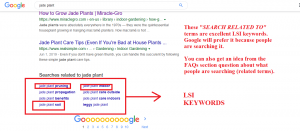
PRO TIP:
Find other names and synonyms of your keywords like “crassula ovata, money plant, money tree, lucky plant,” which are other names for the “jade plant” keyword.
It will boost your organic rankings because you are using multiple names.
Your post will rank for all of those organic keywords, which Google itself will decide. It is very beneficial to use them.
4. Headers (subheadings) and body
It is important to mention your keywords, their other names & LSIs in subheadings and body.
It means to include the keywords in the content, but in a natural and user-friendly way.
Don’t get too carried away or Google will penalize you for keyword stuffing.
Here’s what you should do:
■ Include keywords in your headers a couple of times. Try to make your headers more relevant.
■ Yost plugin will tell you exactly how much you should use your keywords in your body.
■ Using too little or too much are both harmful. Yost will tell you about the quantity.
■ Don’t force it to make it SEO optimized. Use your keywords wisely on spots where it’s needed.
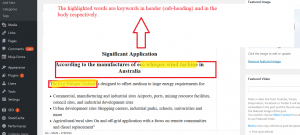
5. Set your URL (slug)
Google & searchers look at your URL (slug) and try to figure out what your post is all about. Doing the following will help make your posts SEO optimized.
Make sure you have entered your keywords in your URL (slug).
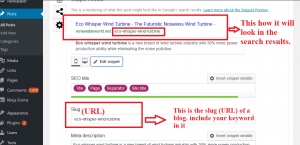
6. Write your meta description in the following way:
A meta description is a summary of your entire blog post. It is a smart means of telling your readers and search engine about your post.
Include your keyword in the meta description to make it easy for Google & searchers to find the blog post.
A meta description shouldn’t be a copied paragraph from your post. It should be unique, to the point, and describes the purpose of the entire blog post. It should also have the keywords in bold letters.
Example:
Topic: “top 10 cars under $10,000 [vintage cars included].”
“In this blog post, you will learn about a list of top cars under $10,000 including those vintage, rare cars [Contact info: of owners included]”
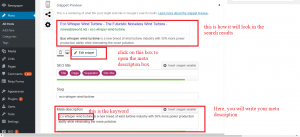
7. Image optimization
Image optimization is another elite-level SEO optimization trick that most bloggers ignore, but shouldn’t.
The Google search engine doesn’t look at the images as we do, but it does look for the image’s alt text. An image alt text tells Google what images are about.
Follow these steps to optimize your images for better optimization:
♦ Write the captions to tell the readers what it’s all about.
♦ Write the descriptions to encourage search engines and users to look at them.
♦ Write alt text.
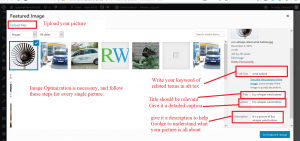
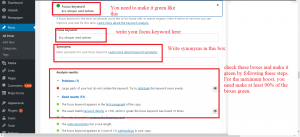
NOTE:
Mention your keywords in each category. It will help Google with an in-depth look at your blog post.
8. Avoid keyword stuffing
Using keywords for SEO optimization only matters if you are using the number of keywords wisely. Yost SEO plugin will tell you exactly how many keywords you should use in your blog post.
Use keywords in situations where they are necessary. Don’t overdo it and don’t stuff loads of keywords in.
NOTE:
Using keywords once in every 150 words is considered ideal.
9. Importance of interlinking and external linking
External links:
Google uses external links as an on-page SEO ranking factor. External links will help your readers see you as more credible by using authoritative resources.
It is very simple to use them on your site. Include 2-5 outbound links to authority resources on your blog post.
Interlinking:
Whenever you publish a new blog post, make sure to link back 2-5 old pages (pages that you want to rank higher).
People mostly use interlinking 20-25 times per page in their blog post. Though it is nice to use interlinking, too much makes it dull.
Use 2-4 interlinks per page and link only to posts that need an SEO boost.
10. Greenlighting for the keyword
Another great feature of Yost SEO plugin is it will tell you how you should set your keywords according to the blog post.
If you scroll to the bottom where you have pasted your keyword (in the focus keyword section), you will see your progress and the things you need to make it right.
You need to make the keyword green by solving almost 90% of its problems like:
■ Placing the keyword in the first paragraph
■ The density of keywords in your blog post
■ Length of a meta description
■ Length of blog post
■ Where to insert a keyword in the title, etc
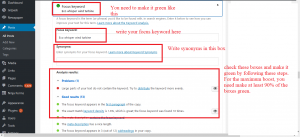
11. Greenlighting for the readability
Readability portion will tell you how to make it user-friendly as far as presentation and readability of the content are concerned.
Most people overlook it, but you shouldn’t.
Making most of the dots green will enhance the quality of your content, and it will be easy for users to access it.
Let’s give you an example of the importance of the readability portion:
Example:
Case 1.
There is a paragraph of 300 words without any bullet points or little paragraphs. Just plain text.
Case 2.
There is some text as it was in the above paragraph but broken into small 20-30 words paragraphs, with bullets and bold characters.
Which one is easy to read?
CASE 2. It will be easy to set your eye on, read and understand rather than going through the plain 300-word text.
Readability tells you how to make your content readable and understandable for users.
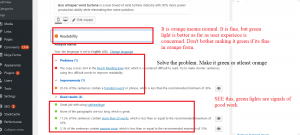
WELL DONE. YOU HAVE SUCCESSFULLY CREATED AN SEO OPTIMIZED BLOG POST. CLICK THE PUBLISH BUTTON.
Before we end, let’s discuss the role of AI in blog creation, what Google says about it, and how you can use it to optimize your blog posts.
Should You Use AI to Create Blogs?
The use of Artificial Intelligence (AI) in creating SEO-optimized blog content is becoming increasingly common, offering tools for efficiency and assistance in content generation. Let’s quickly cover the application of AI in blog creation, outline Google’s stance on AI-generated content, and provide straightforward advice for using AI to improve SEO optimization.
Creating Blogs Using AI
AI tools like ChatGPT support various aspects of blog creation, from generating topic ideas based on current trends to drafting content and improving language use. These technologies can also suggest improvements in grammar, and adjust the style to better suit the intended audience.
Like almost all other technologies, these AI tools aren’t perfect. Even with all their cool features, it remains important that you add your own touch. This ensures that the blog is relevant, accurate, and shares personal thoughts that really speak to the readers.
Google’s Guidelines on AI-Generated Content
Google has updated its content guidelines in response to the increase of AI in content creation, making it clear that AI-generated content should adhere to the same quality standards as that produced by humans. According to Google, the primary goal of content should be to assist users, not to manipulate search rankings. Content quality, not the method of creation, is what Google’s algorithms aim to reward. As such, it’s important for creators using AI to ensure their content is thorough, accurate, and genuinely useful.
Recommendations and Tips to Use AI for SEO Optimization
- Keep it original: Lean on AI for fresh takes, not to churn out content. Quality beats quantity.
- Smart keyword use: use it to stay ahead of trends. ai can be a whiz at finding the right keywords and suggesting where they fit best in your content.
- Engage your readers: Use AI to tweak your content’s readability and personalize recommendations. keeping your audience engaged is key.
- Quality first: Your aim should be content that readers find helpful and interesting. AI’s just here to back you up.
- Play by the rules: Stay updated on what search engines like Google say about AI content. Using AI smartly can boost your SEO without stepping on any toes.
In essence, mixing AI with a personal touch can make your SEO optimized blog post shine and resonate more with your audience, all while keeping search engines happy.
Conclusion

The purpose of an SEO-optimized blog post is to provide value to the searchers, not just a pseudo ranking.
No backlink or promotion will ever outrank useful, relevant, data-driven content, which is there to provide 100% value to readers.
If there is no readable value, spending loads of money and constantly promoting a blog post will not get you anywhere. The user will only stick to your blog if he/she gets what he/she wants, and that is valuable blog posts (content).



